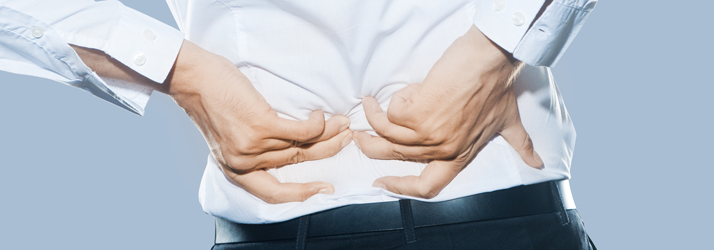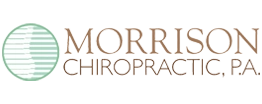Back Pain Options in Ellicott City MD

If you are living with chronic back pain then chiropractic care in Ellicott City MD might be a good option. Almost everyone will experience some form of back pain, ranging from slightly irritating to completely crippling, in their lifetime. Whatever the degree of pain you are experiencing and whether it is acute or has become chronic, at the very least you would probably rather live without it. In the most extreme cases it can be difficult to go on living with it. This article aims to help you to understand what causes lower back pain, and how chiropractic adjustments can help you achieve lasting back health so that you can go on enjoying those walks in the park.
Back Pain in Ellicott City MD
The back is a broad term that covers a large area of the body. It is made up of many tendons, ligaments, discs, muscles, and bones. Without a solid understanding of these different parts, it can be complicated to locate and address the source of the pain. The following explains some of the most common issues and their identifying features. It also explains how chiropractic medicine can help to resolve them. This is a general guideline to help you in your quest for effective options, but we highly recommend that you seek a professional opinion to properly diagnose these issues.
Your lower back is made up of 5 bones stacked on top of each other with a soft "disc" between each segment to allow for flexibility. Normally, each joint in your spine should move freely and independently. Back pain develops when one or more of the joints in your low back becomes restricted. We call this condition "lumbar segmental joint restriction".
Joint restriction can develop in many ways. Sometimes they are brought on by an accident or an injury. Other times, they develop from repetitive strains or poor posture. Several factors may make you more likely to experience low back problems. These include being overweight, smoking, strenuous work, repetitive bending, twisting and lifting, prolonged exposure to whole body vibration- i.e. operating a motorized vehicle, stress, anxiety, depression, dissatisfaction with your job and even your attitude!
Restricted joints give rise to a self-perpetuating cycle of discomfort. Joint restriction causes swelling and inflammation, which triggers muscular guarding leading to more restriction. Since your spine functions as a unit, rather than as isolated pieces, a joint restriction in one area of your spine often causes "compensatory" problems in another. Think of this as a rowboat with multiple oarsmen on each side. When one rower quits, the others are placed under additional stress and can become overworked.
Joint restrictions most commonly cause local tenderness and discomfort. You may notice that your range of motion is limited. Movement may increase your discomfort. Pain from a restricted joint often radiates down to your hips or thighs.
Disc Bulges and Herniations
Disc bulges and herniations are conditions in which the outer edges of the discs, located between the vertebrae, are damaged. This causes the jelly-like center to bulge or is pushed out. This is a surprisingly common issue and it is often, but not always, very painful. Many people who have this condition feel nothing at all. The quality and intensity of it, for those who experience pain, depends on the type and position of the herniation. If the damaged disc is irritating a surrounding nerve, shooting or stabbing pain along with weakness in the legs is often severe.
It is important that this issue is properly identified and promptly treated to avoid further damage. A chiropractor in Ellicott City MD will thoroughly assess your back to determine the extent of the issue and the appropriate care to prevent worsening of the herniation, and provide relief from the associated pain.
If you have been diagnosed with a "Lumbar Radiculopathy". This means that one or more of the nerves emerging from your lower back has become irritated or possibly pinched usually by a herniated disc. This often results in pain, numbness or tingling in the specific area of your leg that is supplied by the irritated nerve. The term "Sciatica" is often used to describe this condition, because most (but not all) "lumbar radiculopathies" involve the sciatic nerve which supplies the back & outside of your thigh and calf. Symptoms of a lumbar radiculopathy may vary from a dull ache to a constant severe sharp shooting pain. Your symptoms are likely aggravated by certain positions or movements.
Chiropractic care has been shown to prevent the advancement of the herniation and provide relief from the associated pain.
Subluxations
Subluxation is a medical term describing a misalignment in the vertebral column. There are a wide variety of causes, including physical stress, trauma, and toxins. Subluxations are often quite painful and can disrupt normal movement. Subluxations are one of the most commonly overlooked contributors to back pain. Chiropractors are trained to identify and correct this issue using non-invasive adjustment techniques.
Muscular Sprains and Tendon or Ligament Strains
Your low back relies on muscles and ligaments for support. "Sprains" and "strains" are the result of these tissues being stretched too hard or too far, much like a rope that frays when it is stretched beyond its normal capacity. The term "sprain" means that the tough, durable ligaments that hold your bones together have been damaged, while "strain" means that your muscles or tendons that move your trunk have been partially torn.
Most people experience low back pain at some point in their lifetime, and 70% of those patients can attribute their symptoms to sprain/strain injuries. Lumbar sprains and strains may result from sudden or forceful movements like a fall, twist, lift, push, pull, direct blow, or quickly straightening up from a seated, crouched, or bent position. Most commonly, sprains and strains are not the result of any single event, but rather from repeated overloading. The spine can generally manage small isolated stressors quite well, but repetitive challenges lead to injury in much the same way that constantly bending a piece of copper wire will cause it to break. Examples of these stressors include: bad postures, sedentary lifestyles, poor fitting workstations, repetitive movements, improper lifting, or being overweight.
Symptoms from a sprain/strain may begin abruptly but more commonly develop gradually. Symptoms may range from dull discomfort to surprisingly debilitating pain that becomes sharper when you move. Rest may relieve your symptoms but often leads to stiffness. The pain is generally centered in your lower back but can spread towards your hips or thighs.
Sprain/strain injuries cause your normal healthy elastic tissue to be replaced with less elastic "scar tissue." This process can lead to ongoing pain and even arthritis. Patients who elect to forego treatment and "just deal with it" develop chronic low back pain more than 60% of the time. Seeking early and appropriate treatment like the type provided by the doctors at Morrison Chiropractic is critical.
Stress and Back Pain
Chronic stress wreaks havoc on the body, and can eventually lead to hyper-tension and chronic back pain. Back pain is a result of tension and muscle spasms that occur when stress hormones are released. The tension will often accumulate in what are referred to as trigger points. These trigger points can be extremely painful and need professional attention to resolve. Chiropractors have the knowledge and tools to relieve stress from trigger points and to deal with underlying nervous system imbalances that may be keeping your body locked in patterns of stress and pain.
If you have questions about how our team at Morrison Chiropractic can help you, please schedule a consultation today.
HOW CAN WE HELP?
Upon completion of a full history, orthopedic and neurological evaluation we will discuss the available treatment options. If we decide you are a good and safe candidate for chiropractic care, to solve the problem, we will treat the source of your nerve irritation. Treatment may consist of:
- Gentle joint manipulation to restore movement to your spine and relieve pain.
- Therapeutic modalities to ease your muscle tightness, pain and swelling
- Therapeutic exercise to restore normal mobility and strength
It is important for you to follow your treatment plan closely and be sure to tell us immediately if you experience any progression of your leg pain, numbness or weakness.
Depending on the severity of your injury, you may need to limit your activity for a while, especially bending, twisting, and lifting, or movements that cause pain. Bed rest is not in your best interest. You should remain active and return to normal activities as your symptoms allow. The short-term use of a lumbar support belt may be helpful. Sitting makes your back temporarily more vulnerable to sprains and strains from sudden or unexpected movements. Be sure to take "micro breaks" from workstations for 10 seconds every 20 minutes. Following acute injuries, you can apply ice for 15-20 minutes each hour. Heat may be helpful after several days or for more chronic origins of pain. Ask your doctor for specific ice/heat recommendations. Some patients report partial relief from sports creams.
If you are suffering from back pain in or have any further questions, please contact our chiropractic team at Morrison Chiropractic today to schedule a consultation.
OFFICE HOURS
Monday
7:00am - 7:00pm
Tuesday
7:00am - 7:00pm
Wednesday
7:00am - 7:00pm
Thursday
7:00am - 7:00pm
Friday
7:00am - 12:00pm
Saturday
7:30am - 12:00pm
Sunday
Closed
Morrison Chiropractic
2850 N Ridge Rd #107
Ellicott City, MD 21043




